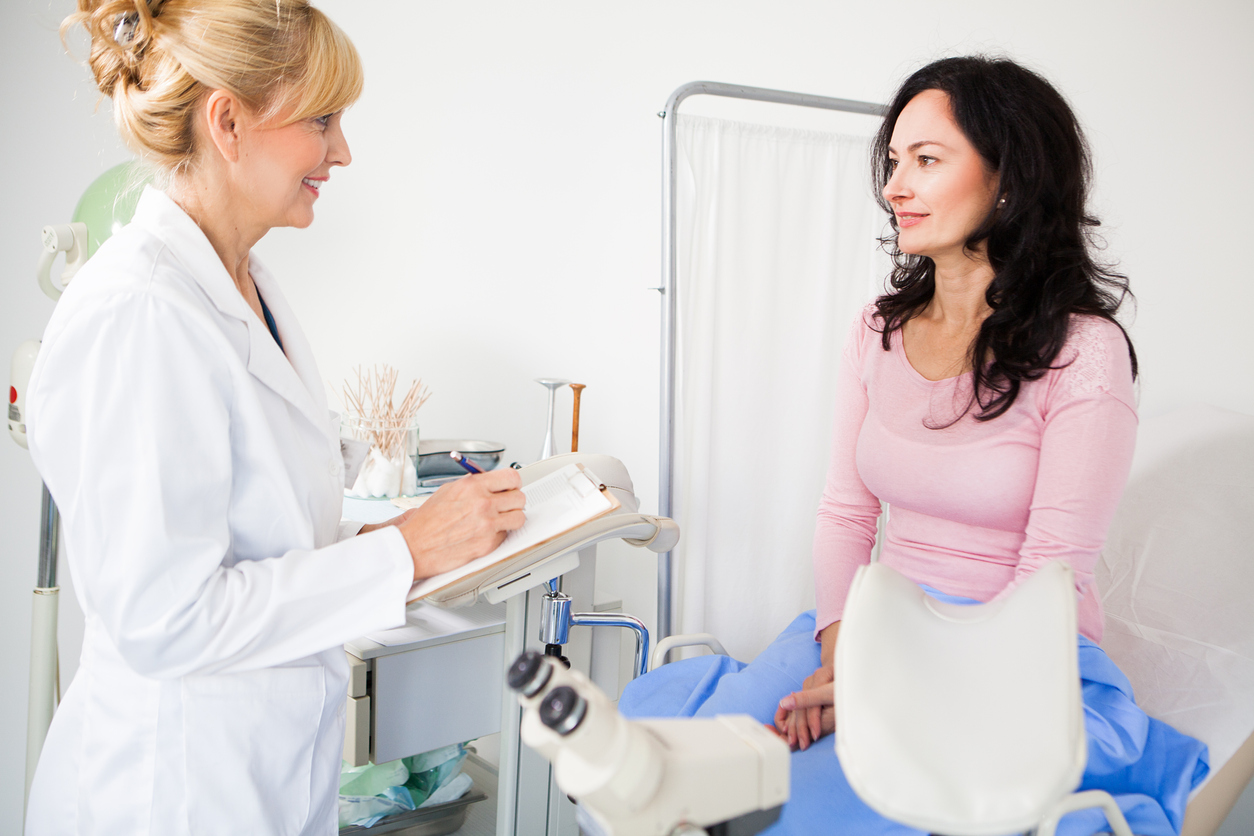DIAGNOSTIC TESTS
Sonohysterogram
A safe and valuable technique for examining the endometrial cavity.
When women in their 20’s and 30’s have abnormal uterine bleeding, the cause is almost always “hormone imbalance.” Such women in the past were often offered hormonal therapies, most commonly in the form of low-dose birth control pills. But as women reach their 30’s and 40’s, concerns about endometrial abnormalities such as polyps, fibroids, precancerous and cancerous lesions increase.
Therefore, for the last 50 years, women of this age with abnormal bleeding have been diagnosed with Dilation & Curettage (D&C) hysteroscopies, endometrial biopsies, and other invasive procedures to exclude serious abnormalities. Not finding an abnormality, they have been left with a diagnosis of “hormone imbalance.” During the past few years, transvaginal sonohysterography (TVSH) has often been used as a less traumatic yet equally accurate office-based alternative.
Sonohysterography is a valuable technique for examining the endometrial cavity and fallopian tubes. It involves instilling a small amount of normal saline into the endometrial cavity with a flexible catheter while simultaneously visualizing the endometrial surface and its thickness with transvaginal ultrasound.
Indications: When it is Used?
- Abnormal vaginal bleeding
- Unexplained infertility
- Recurrent pregnancy loss
- Pre- and post-operative assessment of uterine pathology
Benefits:
- Enhances the endovaginal ultrasound examination of the uterine cavity.
- It is performed easily and rapidly, and is extremely well tolerated by patients and virtually devoid of complications.
- It can prevent further invasive procedures in many patients, including unnecessary D&C.
- Optimizes the preoperative triage process for those patients who may require treatment.
Precautions:
- Sonohysterograms should not be performed if you are pregnant or suspect that you might be pregnant.
- Any pelvic infection, pelvic inflammatory disease (PID) or hydrosalpinx/mucosalpinx (dialated fallopian tubes) should be properly treated and eliminated prior to this procedure. Please ask your doctor for an antibiotics prescription to take prior to the sonohysterogram.
PROCEDURE
- A vaginal ultrasound is first performed. The technologist or radiologist will insert a speculum into the vagina to view the cervix.
- The cervical/vaginal area is cleaned with an antiseptic solution.
- A thin catheter is introduced into the cervical canal. You may experience some pressure and/or cramping as the catheter is inserted into the uterus, which will reduce after a few minutes.
- The vaginal probe is reinserted, and a small quantity of saline solution is then slowly introduced into the uterine cavity with simultaneous visualization using the ultrasound probe.
- The endometrium and uterus are evaluated.
- When the procedure is finished, the catheter is removed. The procedure takes approximately 30 minutes to perform.
- The completed report will be sent to your doctor who will discuss the findings with you, as well as the appropriate follow-up treatment.
PATIENT PREPARATION
- Have a full meal prior to the exam to prevent any potential vasovagal symptoms. There is no need for you to fill your bladder prior to this examination.
- One hour prior to your exam time, take 2 tablets (400 mg total) of an over-the-counter painkiller to prevent or reduce cramps during the exam (e.g. Ibuprofen, acetaminophen, naproxen).
- Please bring a sanitary pad.
POST-TRANSVAGINAL SONOHYSTEROGRAM INSTRUCTIONS
- Pelvic cramps: You can take 2 regular strength tablets every 4-6 hours, rest and use a hot water bottle.
- Mild bleeding within 24 hours after the test: This will settle spontaneously.
For the next 24 hours, refrain from:
- Heavy lifting and rigorous exercise
- Vaginal intercourse
- Using tampons
- Swimming, hot tubs and baths. It is okay to shower.
Very rarely does an infection occur post-sonohysterogram. However, if you notice any fever and/or vaginal discharge with a strange colour and strong odour, you may have an infection. Please see your doctor for an antibiotic prescription.
Locations
Google Reviews
My first time at this location and had wonderful service. The staff were very friendly and all my tests were done quickly and efficiently!
– ELIZABETH S.

